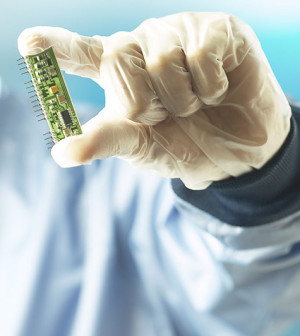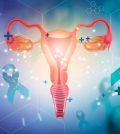- Double Mastectomy May Offer No Survival Benefit to Women With Breast Cancer
- Toxic Lead Found in Cinnamon Product, FDA Says
- Certain Abbott Blood Sugar Monitors May Give Incorrect Readings
- Athletes Can Expect High Ozone, Pollen Counts for Paris Olympics
- Fake Oxycontin Pills Widespread and Potentially Deadly: Report
- Shingles Vaccine Could Lower Dementia Risk
- Your Odds for Accidental Gun Death Rise Greatly in Certain States
- Kids From Poorer Families Less Likely to Survive Cancer
- Tough Workouts Won’t Trigger Cardiac Arrest in Folks With Long QT Syndrome
- At-Home Colon Cancer Test Can Save Lives
What Puts That Individual Stamp on Your Face?


THURSDAY, Oct. 24No two faces are exactly alike, possibly because of specific genetic factors recently identified by U.S. researchers.
Just like fingertips, faces have their own distinct makeup. And new experiments in mice reveal that gene enhancers are significant players in head and facial (craniofacial) development, according to a study published Oct. 24 in the journal Science.
“Our results suggest it is likely there are thousands of enhancers in the human genome that are somehow involved in craniofacial development,” study leader Axel Visel, a geneticist in the genomics division at the U.S. Department of Energy’s Lawrence Berkeley National Laboratory, said in a lab news release.
These gene enhancers are regulatory sequences of DNA that turn-on or amplify the expression of a specific gene.
“We don’t know yet what all of these enhancers do, but we do know that they are out there and they are important for craniofacial development,” Visel said.
Previous studies have identified some genetic defects that cause craniofacial abnormalities such as cleft lip and palate, but the genetic factors responsible for normal craniofacial development have been poorly understood.
Visel and colleagues identified more than 4,000 possible gene enhancer sequences in mice that may play a role in craniofacial development. Many of these gene enhancer sequences are present in people.
Along with improving understanding of how genes affect craniofacial development, this research could help scientists pinpoint mutations in enhancers that may play a role in birth defects, leading to improved diagnosis and treatment, Visel said.
However, it’s important to note that results achieved in animal experiments don’t always translate to humans.
More information
The U.S. National Library of Medicine has more about craniofacial abnormalities.
Source: HealthDay
Copyright © 2024 HealthDay. All rights reserved.










